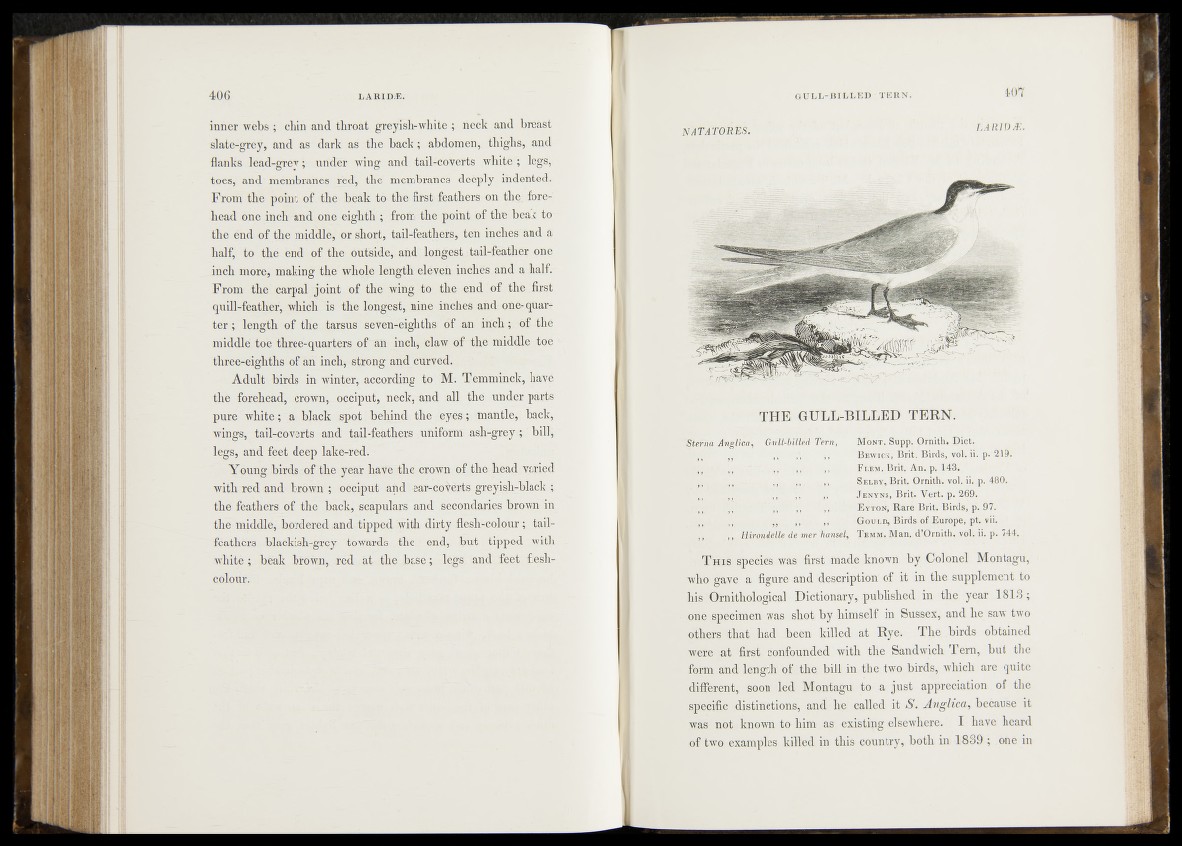
inner webs ; chin and throat greyish-white heck and „breast
slate-grey, and as dark as the back"; a b d om J frj^ h s , and
flanks léad-grey; under wing and tail-coyerts w h i t^ « g s ',5
toesi, and membranes red, tlpkjihembrane^ deeply ifidepiied/
From the point pf,,the beak tó-thle firist feathers on th&jforer'
head one inch-and on ©„ eighth ; from the poinLo£/thnib;©ak mm
the énd of the middïé, or „‘■hort, tail-feathers,< tenv inches and-a'
half, to thé end „of the outside, ahjdylpngest tail-feather one
.inch more, making the whole l#0^hk:eley£D3‘h3tQh|s.a6 d a halfr
From the carpal joint of the wing, to the end^pf^- th e ^ r |t
quill-feather, which "is the longest', nin^jilfpaes and>^ne-qf^
t e r ; length of the tarsus ^fin^ighthsfCof „an Rich; of thé
middle toé three-quarters ofL'an inchj 'claw of~the m id d le :!^
three-eighths of ah irieh^tjong’and^clfye^ f -
Adult birds in winter, according to "M-. Temminek, havé
thé forehead^^croWn^-occiput, neck, and all thq^uh-der^arts'
pure white; a., black "spot i bellinde the'^eye^;: :piantle,: bacj^
wings, tail-coverts and tail-feathers uniform^ash-ag^CTBj bill,
légs, and feet deep lakPfedS
Young birds of the year have tlio-crown o||bIio head varied
withered and brown ; tfo'eciput 'and^ear-co^^s^èy-isJijblack ;
thé feathers of th ë ^ ^ ^ ^ c a p u la rs ^cbjs^con<lar;ies brown in
th é mi^tephordered^ndhipped with diM^ieab^ca ^ pr ; tail-
feathers blackish-gr^y towards „the-: end, b u t. tipped ,„with
whitèjb beak brown, red at_the J>ase; legf ^aml^Ui.t. fledi-
colour. I
NAT A t ORES. LARI DM.
T H E GULL-BILLED T E R N .
Ster na Anvhc&y Waimilêcl Tern,
,, Ilirfindelle de mer'ftansel,
■Mont. Supp. Ornith. Diet.
Bewick,' Brit. Birds, veil. ii. p. 219.
F lew. Brit. An. p. 143,.
Selby, Brit. Ornith. vol. ii, p. 480.
J enyns, Brit. Vert. p. 269.
?e J;to.n , Rare Brit. Birds, p. 9 7 .
iGj&u LD, Birds of Europe, pt. vii.
T emm, Man. d’.Ornith, vol. ii. p. 744.
T h i s 'species, was first -inade' known by Colonel Montagu,
who gave a figure*:and description' of it in the supplement to
his Ornithological Dictionary,, published in the year 1813;
nn4|gpnfeim en was shot by himself in Sussex, and he saw two
others that had_A>een killed at Rye, .The. birds obtained
were at first confounded with the Sandwich Tern, but the
-form and length of ithe. bill in the two birds, which are quite
different, soon led Montagu to a just appreciation of the
specific distinctions, and he called it »S'. Anglica, because it
was not known; to him as existing elsewhere. I have heard
of two examples killed in this country, both in 1839; one in